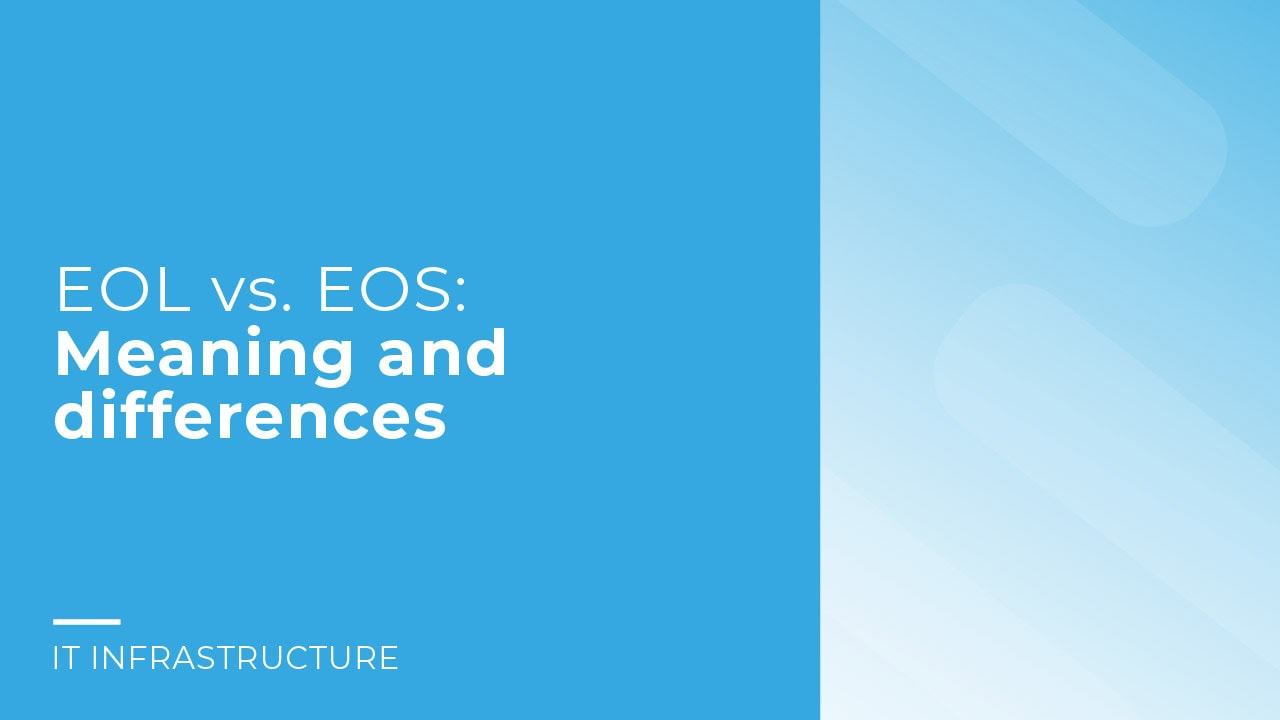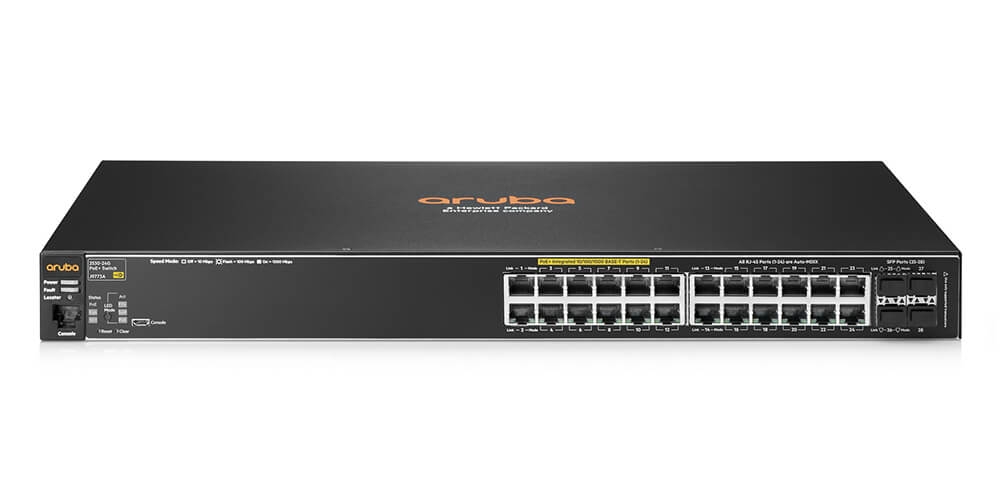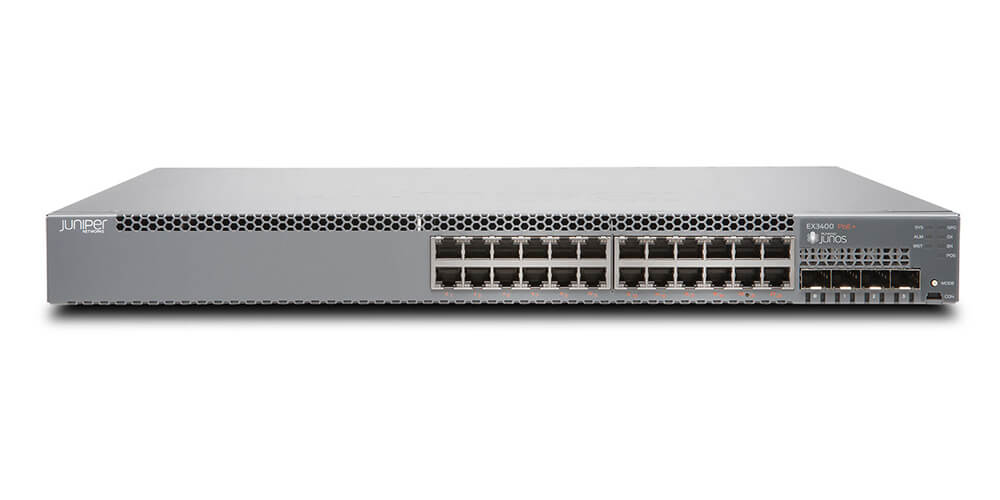
The lifespan of IT hardware is limited, not only by defects, but also by decisions made by manufacturers. They determine how long their customers can use devices before they discontinue support and introduce new models. There can be several reasons for this. On the one hand, this happens due to new market requirements and, on the other, due to the introduction of innovative technologies. This in turn stimulates the sale of new devices.
Terms such as EOL (End of Life) and EOS (End of Service) are used in this context. However, many users do not understand what exactly is meant by these terms. In this blog post, we explain what these terms mean.
EOL stands for “End-of-Life” and is the last phase in the life cycle of a product. This can affect electronic products, components and software that are no longer produced by the manufacturer. They are therefore no longer available, but can still be used without any problems. The support offer remains in place. In electromechanics, EOL describes the phase from the transition from series production to discontinuation, in which only small quantities of spare parts are produced. As series and supplier companies are often no longer able to produce these quantities cost-effectively, an external service provider often takes over production.
IT experts look for signs such as slow performance and frequent crashes in PCs, servers and other hardware that indicate the end of the life cycle. Replacement decisions are based on defined performance and warranty criteria.
Software applications that no longer work effectively or are too slow also need to be replaced. Compatibility issues with newer hardware or operating systems often require a new version or an alternative software solution. Reaching the expiry date of an application without further updates or support from the provider can also have security risks.
EOS stands for “End-of-Service”, “End-of-Support” or “End-of-Sale”. The latter is the discontinuation of a product, similar to EOL. From this point on, the product is no longer offered by authorized dealers or directly by the manufacturer. It is very important to recognize the difference between all these terms in order to avoid misunderstandings.
“End-of-service” or ‘end-of-support’ means the discontinuation of support for a product or service by the manufacturer. This no longer includes updates, maintenance or technical support. Although use is still possible, there are security risks. Users are therefore responsible for their own maintenance and security.
EOS announcements will provide information on the timeline for discontinuation of support, possible migration paths or upgrade options, and recommendations for switching to alternative solutions. It is advisable for companies and individuals affected by EOS to review their current use of the product, assess the impact of discontinued support and develop measures to minimize business disruption and mitigate potential risks.

End of life and end of support are closely linked in the lifecycles of hardware and software. EOL often marks the transition to the next phase, the EOS. Manufacturers typically specify a date from which support for a system or device will cease. In doing so, they often try to persuade users to upgrade to newer versions of older systems, which can sometimes be more expensive. These practices have long been established in the industry by hardware and software vendors.
| Aspects | End of Life (EOL) | End of Service (EOS) |
|---|---|---|
| Meaning | Date on which a product or service is no longer sold or further developed | Date on which the manufacturer no longer provides support services, including technical assistance and security updates |
| Effects on safety | End of availability for the purchase or acquisition of a product, without further updates or security features | Termination of support, updates and maintenance services, exposing existing users to increased security risks |
| Effects on functionality | No more new functions or improvements | Existing functions are retained, but without support in the event of problems |
| Compatibility | Product could quickly become incompatible with new technologies or standards | Product initially remains compatible, but may have long-term problems with new systems due to lack of updates and support |
| Costs | Possible costs for replacing or upgrading the product | Costs for external support or security measures to compensate for the lack of manufacturer support |
| Planning and migration | EOL calls on companies to find alternative products or solutions | EOS encourages companies to ensure they are planning a transition to alternative solutions or upgrades |
| Risk and compliance | Increased risk as no new security features are developed; can lead to compliance issues if outdated software does not meet current standards | Companies may struggle to meet legal and regulatory requirements as security updates are no longer provided |
At IT-Planet, we offer customized solutions for these specific requirements. Our range includes a wide selection of devices that have reached end of life (EOL) or end of support (EOS). This often allows you to replace your existing hardware and network technology without having to make extensive adjustments to the system. If you have any questions, our team of experts will help you. You can expand your IT infrastructure with us. You can find more information on infrastructure in our blog post “Build IT infrastructure and benefit from improved processes”.



Understanding EOL and EOS is very important as these terms characterize the lifecycle of IT hardware and software. EOL marks the end of a product's availability and development. EOS, on the other hand, marks the point at which support is discontinued. You can find out more about EOL and EOS in our online store.
Companies should monitor both phases and switch to new solutions in good time. At IT-Planet, you will find professional advice and tailor-made solutions to help you with your challenges.
In our online store, you will not only find EOS and EOL devices, but also many products such as switches, routers, UPS systems and wireless access points from well-known brands such as Cisco, SonicWall and Eaton.